
Gush Dan is a conurbation in Israel, located along the country's Mediterranean coastline. There is no single formal definition of Gush Dan, though the term is in frequent use by governmenting bodies. It ranges from combining Tel Aviv with cities that form urban continuum with it, to the entire areas from both the Tel Aviv and the Central District, or sometimes the whole Metropolitan Area of Tel Aviv, which includes a small part of the Southern District as well. Gush Dan is the largest conurbation and metropolitan area in Israel, with the metropolitan area having an estimated population of 4,054,570 residents, 95% of whom are Israeli Jews. Despite making up less than 8% of Israel's total land area, it houses about 45% of the country's total population. It is the second or third largest metropolitan area on the Mediterranean Sea.
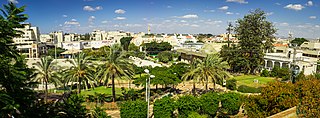
Kfar Saba, officially Kefar Sava, is a city in the Sharon region, of the Central District of Israel. In 2019 it had a population of 110,456. The population in Kfar Saba is nearly entirely Jewish.
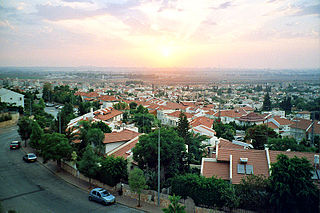
Rosh HaAyin is a city in the Central District of Israel. To the west of Rosh HaAyin is the fortress of Antipatris and the source of the Yarkon River. To the southeast is the fortress of Migdal Afek. In 2019, it had a population of 61,801.

Bat Ayin is an Israeli settlement in Gush Etzion in the West Bank, between Jerusalem and Hebron. It is administered by the Gush Etzion Regional Council, with a population of less than 1,000, consisting mainly of "Ba'alei T'shuva" Jews with Hasidic tendencies. The international community considers Israeli settlements in the West Bank illegal under international law, but the Israeli and US governments dispute this.

Hagor is a moshav in the Central District of Israel. Located between Rosh HaAyin and Kfar saba it falls under the jurisdiction of Drom HaSharon Regional Council. In 2019 it had a population of 1,162.
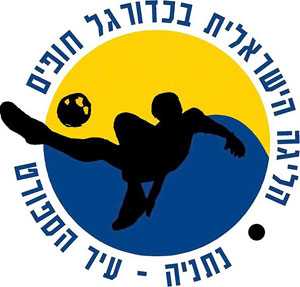
The Israeli Beach Soccer League, currently known as Ligat Bank Yahav for sponsorship reasons, is the top division in the Israeli Beach Soccer league. In July 2007 the league was inaugurated under the supervision of the Israel Football Association. To celebrate the launch of the league, a friendly game between national teams of England and Israel was played, with the Israelis winning 6–5.

Rail transport in Israel includes heavy rail as well as light rail. Excluding light rail, the network consists of 1,384 kilometers (860 mi) of track, and is undergoing constant expansion. All of the lines are standard gauge and as of 2016 the heavy rail network is in the initial stages of an electrification program. A government owned company, Israel Railways, manages the entire heavy rail network. Most of the network is located on the densely populated coastal plain. Some of the rail routes in Israel date back to before the establishment of the state – to the days of the British Mandate for Palestine and earlier. Rail infrastructure was considered less important than road infrastructure during the state's early years, and except for the construction of the coastal railway in the early 1950s, the network saw little investment until the late 1980s. In 1993, a rail connection was opened between the coastal railway from the north and southern lines through Tel Aviv. Previously the only connection between northern railways and southern railways bypassed the Tel Aviv region – Israel's population and commercial center. The linking of the nationwide rail network through the heart of Tel Aviv was a major factor in facilitating further expansion in the overall network during the 1990s and 2000s and as a result of the heavy infrastructure investments passenger traffic rose significantly, from about 2.5 million per year in 1990 to about 67 million in 2018.

The Tamar gas field is a natural gas field in the Mediterranean Sea off the coast of Israel. The field is located in Israel's exclusive economic zone, roughly 80 kilometres (50 mi) west of Haifa in waters 1,700 metres (5,600 ft) deep. The Tamar field is considered to have proven reserves of 200 billion cubic metres of natural gas, while the adjoining Tamar South field has 23 billion cubic metres. Together, they may have an additional 84 BCM of "probable" reserves and up to 49 BCM of "possible" reserves. At the time of discovery, Tamar was the largest find of gas or oil in the Levant basin of the Eastern Mediterranean Sea and the largest discovery by Noble Energy. Since Tamar's discovery, large gas discoveries have been made in other analogous geological formations dating back to the Oligocene–Miocene epoch in the Levant basin. Because Tamar was the first such discovery, these gas containing presalt formations have become collectively known as Tamar sands.

Afikim is an Israel bus company that operates on routes connecting the Gush Dan and Sharon plain regions with the western Samaria region of the West Bank, as well as lines in Ashdod, Yavne, Rosh HaAyin and other locations.
Events in the year 2003 in Israel.

The Leviathan gas field is a large natural gas field in the Mediterranean Sea off the coast of Israel, 47 kilometres (29 mi) south-west of the Tamar gas field. The gas field is roughly 130 kilometres (81 mi) west of Haifa in waters 1,500 metres (4,900 ft) deep in the Levantine basin, a rich hydrocarbon area in one of the largest offshore natural gas field finds. According to some commentators, the gas find has the potential to change Israel's foreign relations with neighboring countries Turkey, and Egypt. Together with the nearby Tamar gas field, the Leviathan field is seen as an opportunity for Israel to achieve a degree of energy independence in the Middle East.
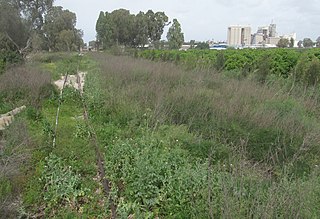
The Eastern Railway refers to a railroad in central Israel stretching from Lod to Hadera. The section between Kfar Saba and Lod, as well as a short section just north of Hadera are currently in use but the rest of the railway has not been operative since 1969. However, in 2019 a large-scale project began to rebuild and upgrade the railway along the entire route.
Events in the year 2003 in the Palestinian territories.
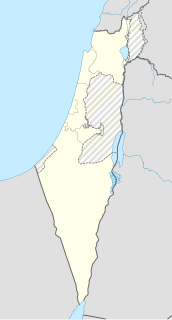
Sara and Myra were two Israeli offshore drilling licenses located west of Netanya, Israel. The licenses expired on July 13, 2015. Exploratory drilling in the license area in 2012 was unsuccessful, but seismic studies indicated the possibility of oil and gas at deeper strata that were not explored.
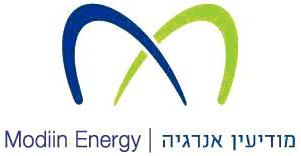
Modiin Energy LP is a publicly traded company engaged in oil and gas exploration in Israel. It is listed on the TA MidCap 50 Index as well as on the TA Oil and Gas Index of the Tel Aviv Stock Exchange. The company owns rights to drilling licenses in various locations throughout Israel and in Israel's maritime exclusive economic zone.

Aphrodite gas field is an offshore gas field off the southern coast of Cyprus located at the exploratory drilling block 12 in the country's maritime Exclusive Economic Zone. and bordering the Yishai gas field, located in Israeli territorial waters. Located 34 kilometres (21 mi) west of Israel's Leviathan gas field, block 12 is believed to hold 3.6 to 6 trillion cubic feet of natural gas. In 2014, the reserve estimate for the quantity of natural gas held by Aphrodite was raised by 12% due to new data received from the Yishai prospect as reported by Delek Drilling to the Israel Securities Authority. The cost of the field's development was estimated to range from $2.5 billion to $3.5 billion.
Isramco Negev 2 LP is an American Israeli Limited Partnership that holds interests in oil and gas properties in Israel. The partnership shares are traded on the Tel Aviv Stock Exchange and have been a constituent of the TA-25 Index since January 2010. The partnership was founded by Isramco Inc. and other parties in 1989.
The 2013 Israeli Beach Soccer League was a national beach soccer league that took place between 31 May and 26 July 2013, in Netanya, Israel.
The 2016 Israeli Beach Soccer League was a national beach soccer league that took place between 17 June and 29 July 2016, in Netanya, Israel.

Natural gas in Israel is a primary energy source in Israel, mainly utilized for electricity production and to lesser degree in industry. Israel began producing natural gas from its own offshore gas fields in 2004. Between 2005 and 2012, Israel had imported gas from Egypt via the al-Arish-Ashkelon pipeline, which was terminated due to Egyptian Crisis of 2011-14. As of 2017, Israel produced over 9 billion cubic meters (bcm) of natural gas a year. Israel had 199 billion cubic meters of proven reserves of natural gas as of the start of 2016. In early 2017, Israel began exporting natural gas to the Kingdom of Jordan.













